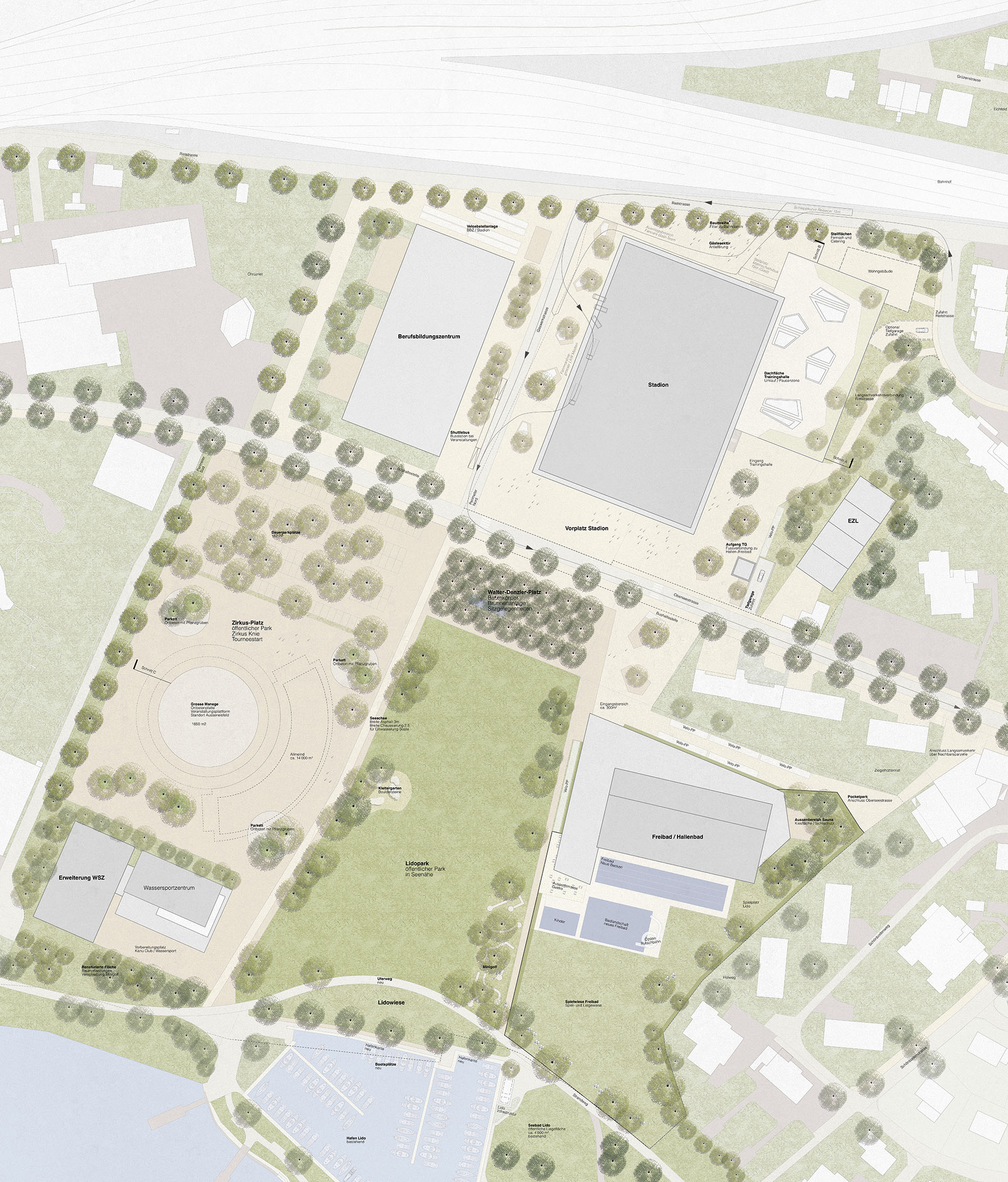
The replacement of the old ice stadium opens up the possibilities for a comprehensive redevelopment of the Lido site. The large building masses of the BBZ, stadium, training hall, energy center and the optional high-rise building are all located on the side of Oberseestrasse facing away from the lake. The densification of this area between the railway line and Oberseestrasse continues the existing development and forms a closure to the railway embankment and the Weidmann area.
The building lots facing the lake will be redesigned as green and open spaces with interspersed high-rise buildings. The watersports center and its extension as well as the new open-air and indoor swimming pool give these areas an urban planning framework and define the orientation of the green spaces from the lake towards the new stadium. The density and height of the buildings decrease towards the lake. The city silhouette from the lake towards the old town is clarified again.